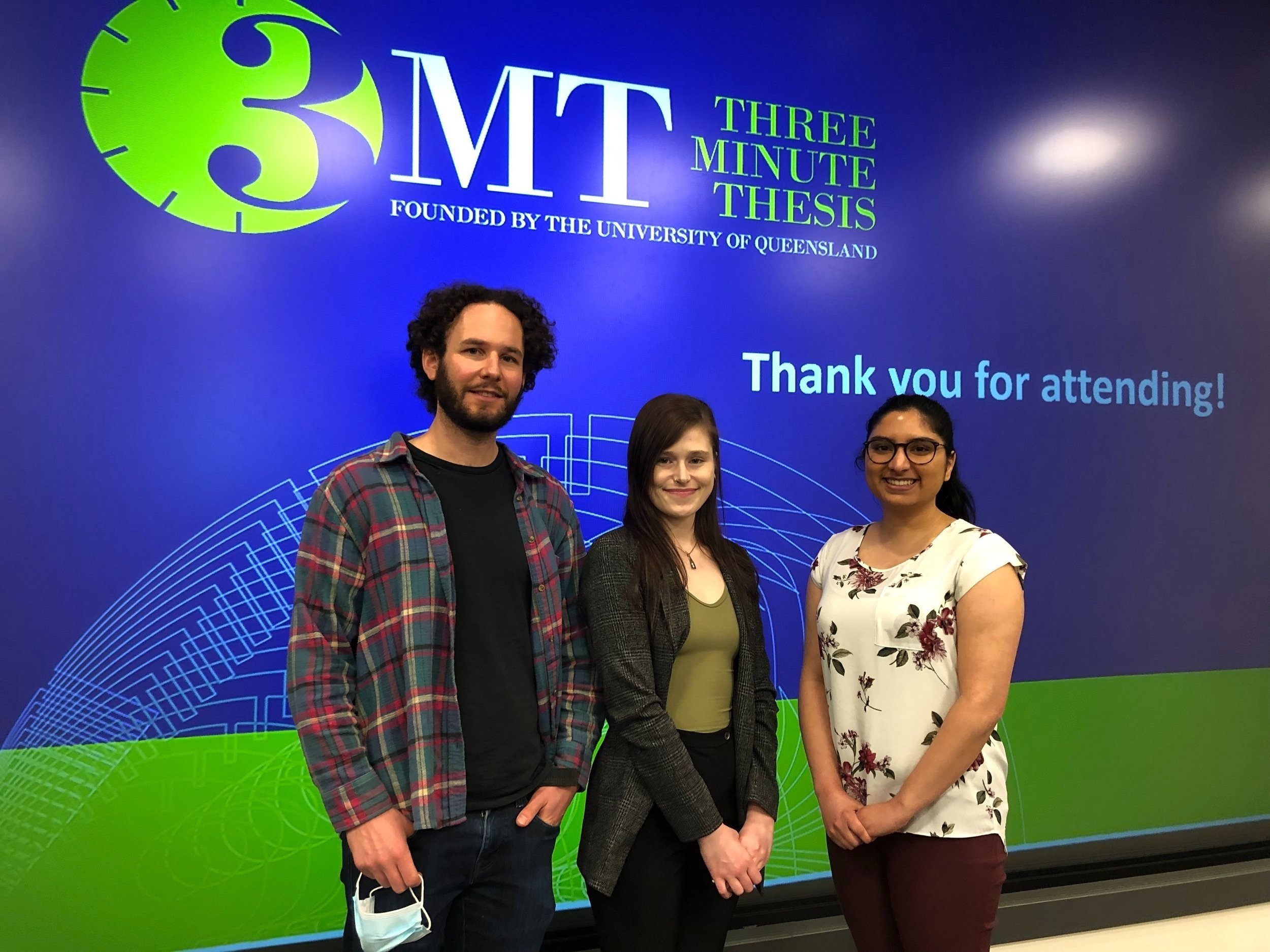


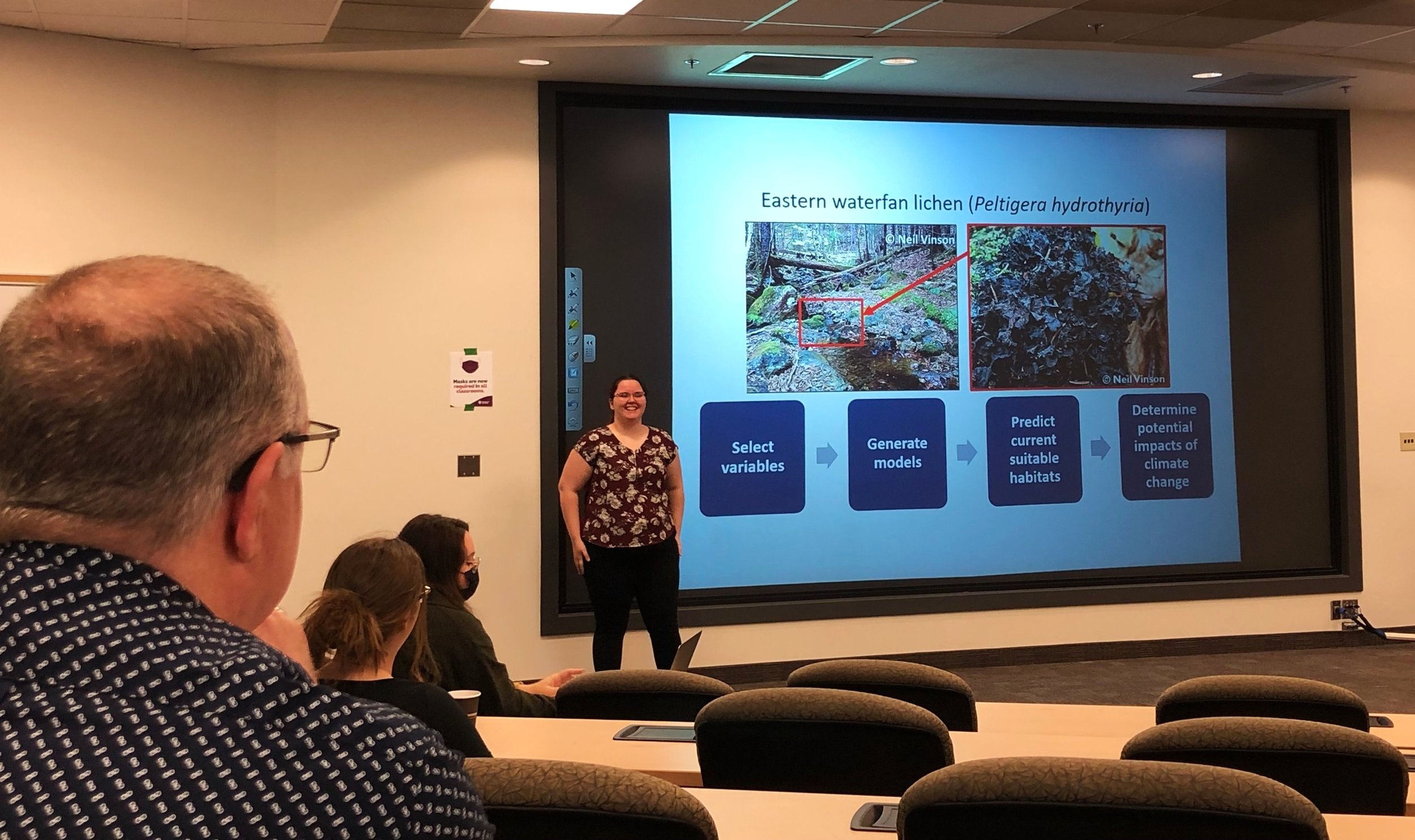

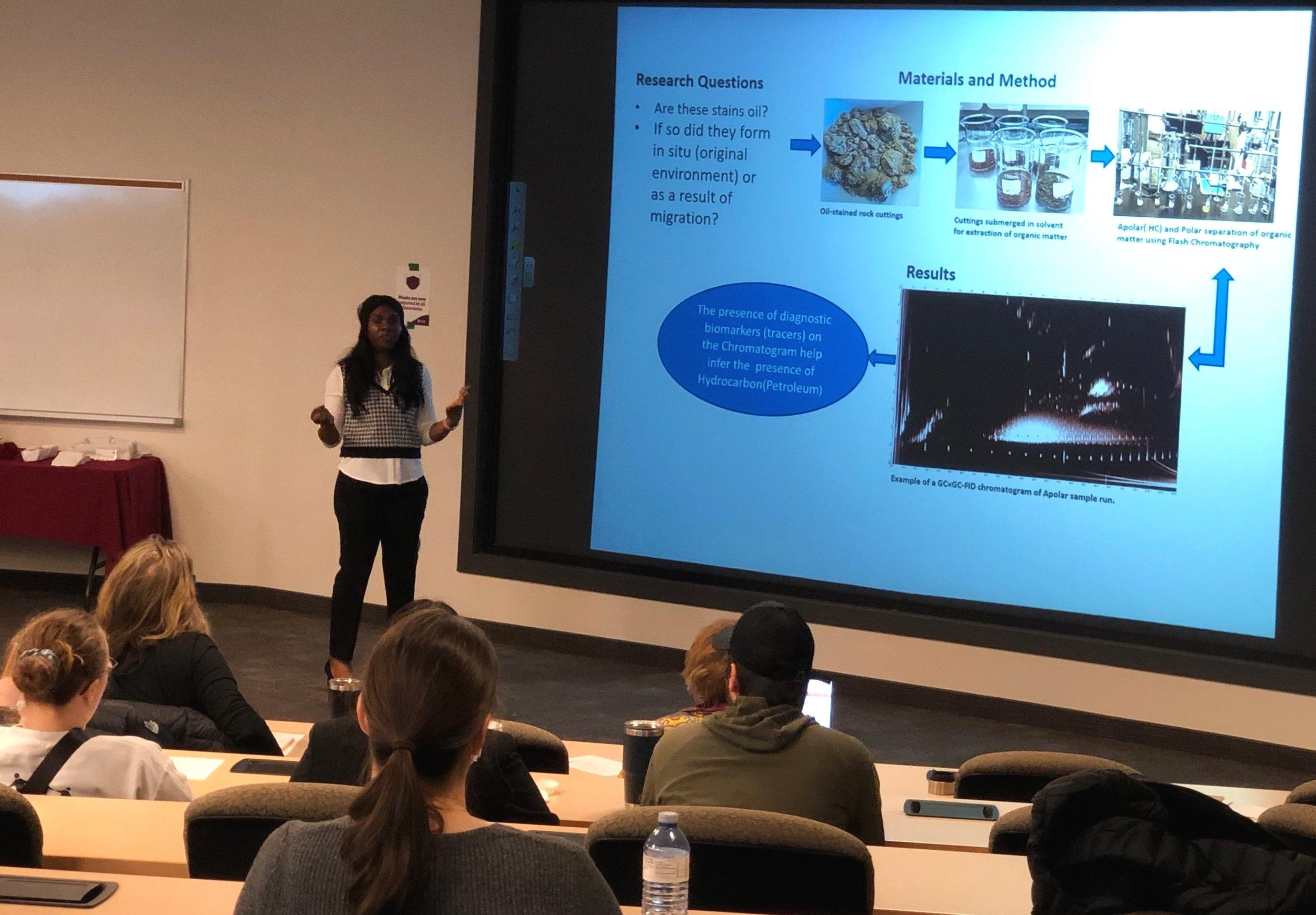
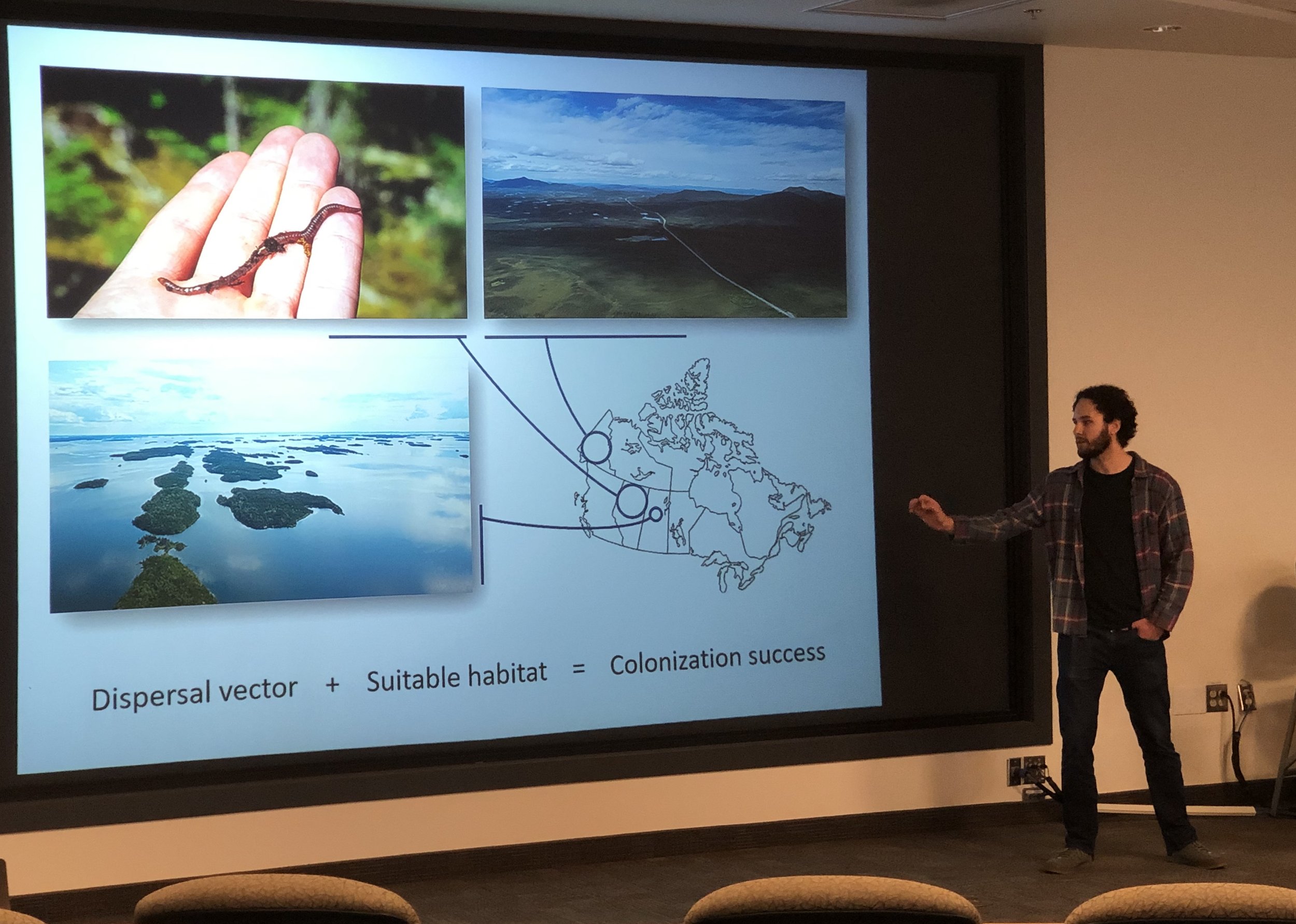
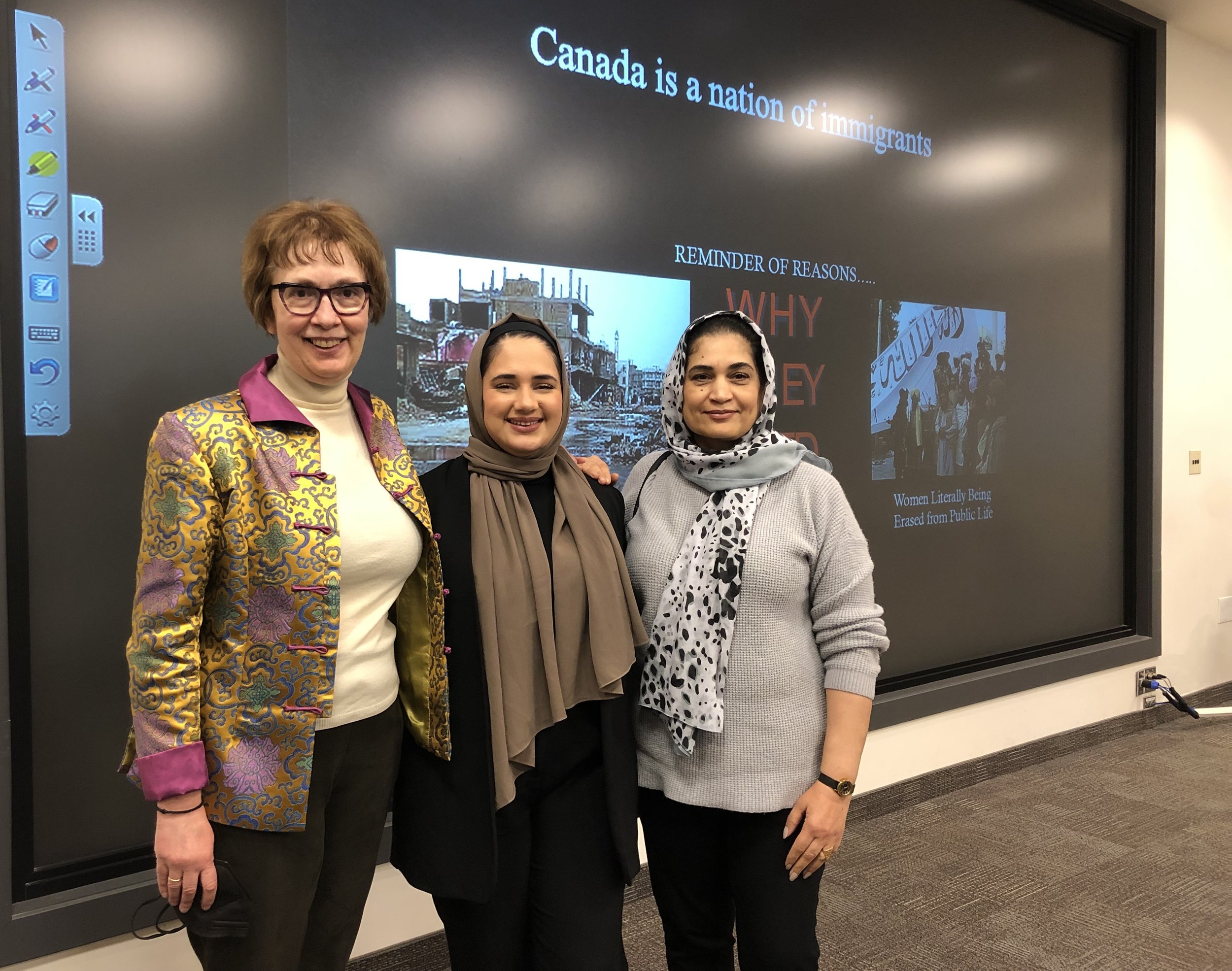
Shannon MacFarland, a first-year Master of Science student in Astronomy, won first place in the recent Three-Minute Thesis (3MT) competition at Saint Mary’s University. Her topic ‘How does a galaxy die? Determining the star formation history from a galaxy's colour’, also earned the People’s Choice award at the competition. MacFarland will compete in the Eastern Regionals in June.
In second place was Gabrielle Armstrong, Master of Science in Applied Science. Stephen Paterson, PhD in Applied Science, received an honourable mention.
Condensing a thesis—the result of months or even years of work—into three minutes is an impressive feat. Three-Minute Thesis (3MT) competitors are challenged to condense and communicate their work while still making it accessible to a non-expert audience—with the clock ticking. Hosted by the Faculty of Graduate Studies and Research, the annual 3MT event saw seven Saint Mary’s Masters students and PhD candidates explain their research with one static Powerpoint slide, no other props or aids. The participants spoke about a wide range of topics, showing the breadth of research and study at Saint Mary’s University.
Originally from White Rock, British Columbia, MacFarland completed her BSc at the University of British Columbia. She chose Saint Mary’s for her graduate studies because her supervisor, Dr. Marcin Sawicki, is part of CANUCS (The Canadian NIRISS Unbiased Cluster Survey). CANUCS has guaranteed observation time with the James Webb Space Telescope (JWST).
“It's very competitive right now to get time with such a new instrument, so I could not turn down an opportunity to work with JWST data within the first year of its operating time,” says MacFarland. “I'm very fascinated by the distant past and galaxy evolution. JWST is the perfect tool for looking far back into the universe, and Dr. Sawicki's group is full of experts and students that share that passion, so SMU seemed like a good fit.”
Shannon MacFarland presents at 3MT
More about Shannon MacFarland’s research: The colour of a galaxy contains a large amount of information about what stage of life a galaxy is in. Broadly, we put galaxies into two categories: Blue galaxies are considered "alive" because the gas within them is being compressed to form new stars. Red galaxies are considered "dead" because there is little to no star formation within them. We also know that in the past, there were more blue galaxies than there are today. This indicates some process by which a galaxy's colour transitions from blue to red, and its star formation is suppressed or shut down. What I'm interested in is how quickly/slowly a galaxy transitions from blue to red, also known as a galaxy's star formation history. To do this I am using the most powerful telescope ever created, the James Webb Space Telescope. This research is important because we know from the diversity of galaxies that we see that all galaxies evolve differently. My work will aim to answer how all galaxies, like our own Milky Way, will eventually die.
Saint Mary’s 3MT competitors:
Gabrielle Armstrong (second place), MSc Applied Science (Biology)
Occurrence and preference of anthropogenic materials in European Starling (Sturnus vulgaris) nests
Julie Dayrit, MSc Applied Science (Chemistry)
Ancient solution to a modern problem: Combating antimicrobial resistance using Philippine medicinal plants
Stephaniie Erhunmwunsee, PhD Applied Science (Geology)
Organic geochemical analysis of Early Jurassic oil shows in the Scotian Basin
Miranda Frison, MA Geography
Understanding habitats and distributions of threatened lichens within Atlantic Canada through the creation of species distribution models and their model-derived products.
Tamana Hamid, MA Global Development Studies
Afghan immigrant women and their integration into Canadian society
Stephen Paterson, PhD Applied Science (Environmental Science)
The silent migration beneath our feet: understanding the spread of non-native earthworms in northern Canada

